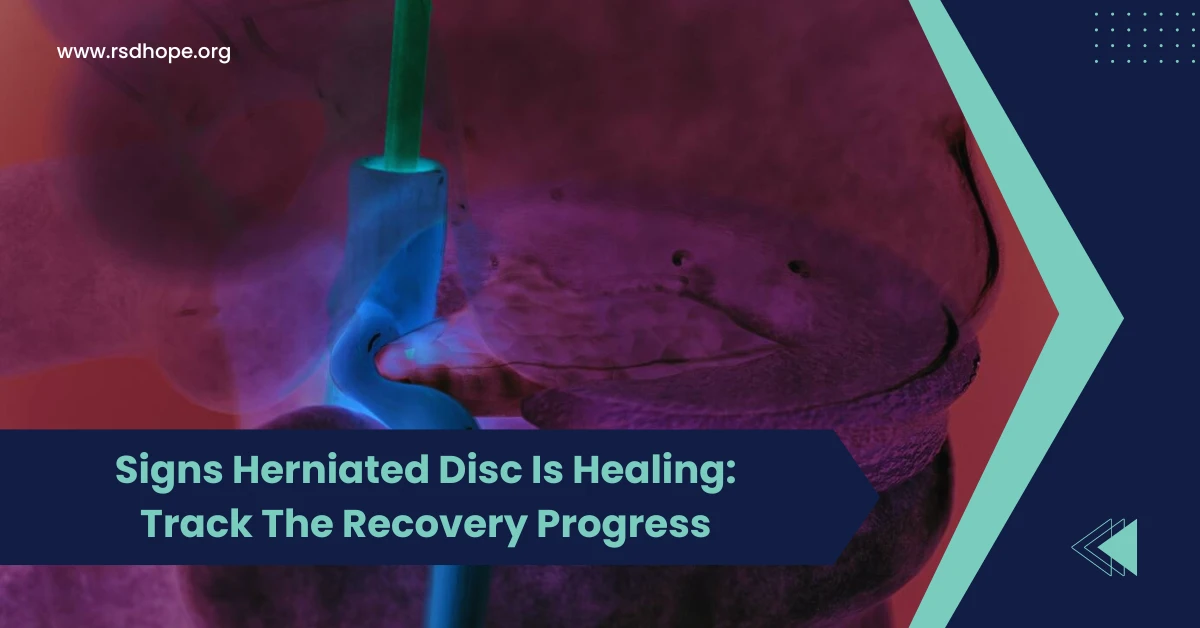A herniated disc occurs when the soft, gel-like center of a spinal disc pushes through a crack in the tougher exterior casing. This condition can cause pain, numbness, and weakness in the affected area.
Common causes of a herniated disc include age-related wear and tear, repetitive motions, and injury. Recognizing the signs of healing is crucial for individuals undergoing treatment for a herniated disc.
Key Takeaways
- Understanding the stages of healing can help you recognize signs that your herniated disc is improving.
- Reduction in pain, inflammation, and improved mobility are positive indicators of a healing herniated disc.
- Healing duration varies, and following a personalized treatment plan is essential for optimal recovery.
Understanding the Signs of Healing
Recognizing the signs of healing is an essential part of the recovery process for a herniated disc. As the body works to repair the damaged tissue, it goes through different stages of healing. Initially, inflammation occurs as the body’s natural response to injury.
As inflammation reduces and tissue repair progresses, you may start to notice improvements in your symptoms. These changes are positive indicators that your herniated disc is healing.
Also Read: How To Speed Up Nerve Regeneration After Prostate Surgery? Accelerate Your Healing
Signs that Indicate a Healing Herniated Disc
Several signs can suggest that your herniated disc is healing. One of the most notable indicators is a reduction in pain and discomfort. As the inflammation subsides and the disc begins to heal, you may experience less pain in the affected area.
Additionally, you may notice an improvement in your mobility and range of motion. As the disc heals, it allows for better movement and flexibility in the spine. These improvements may be gradual, but they are encouraging signs of progress.
How Long Does a Herniated Disc Take to Heal?
The healing timeline for a herniated disc can vary depending on several factors, such as the severity of the herniation, your overall health, and your adherence to treatment. In general, the healing process can take several weeks to several months.
It’s essential to have patience and follow your doctor’s recommendations during this time. Rushing the healing process or engaging in activities that strain the affected area can prolong recovery or even worsen the condition.
Treatment for Herniated Disc
Treatment for a herniated disc typically involves a combination of conservative measures and, in some cases, surgical intervention. Conservative treatment options may include pain management techniques, such as over-the-counter pain relievers and heat or cold therapy.
Physical therapy is often recommended to strengthen the muscles surrounding the spine and improve flexibility. Lifestyle modifications, such as maintaining good posture and using proper lifting techniques, can also aid in the healing process.
In severe cases or when conservative treatments fail to provide relief, surgical options may be considered. It’s crucial to consult with a healthcare professional to determine the most appropriate treatment plan for your specific case.
Conclusion
Recognizing the signs of a healing herniated disc is an important part of the recovery process. By understanding the stages of healing and being aware of improvements in pain, inflammation, and mobility, you can track your progress and stay motivated throughout your recovery.
Remember that healing takes time, and it’s essential to follow your doctor’s recommendations and be patient with your body. If you have any concerns or questions about your herniated disc, don’t hesitate to consult with a healthcare professional for accurate diagnosis and personalized treatment.
Read More: How To Sit With SI Joint Pain? A Guide To Proper Sitting
FAQs
A: It’s important to follow your doctor’s recommendations regarding activity levels during the healing process.
A: Your doctor or physical therapist may recommend specific exercises to strengthen your core and back muscles.
A: Over-the-counter pain relievers, heat or cold therapy, and gentle stretching can help manage pain during recovery.
A: If you experience severe pain, numbness, or weakness, or if your symptoms don’t improve with conservative treatment, consult your doctor.
Sources:
- “Herniated Disk in the Lower Back.” American Academy of Orthopaedic Surgeons, https://orthoinfo.aaos.org/en/diseases–conditions/herniated-disk-in-the-lower-back

